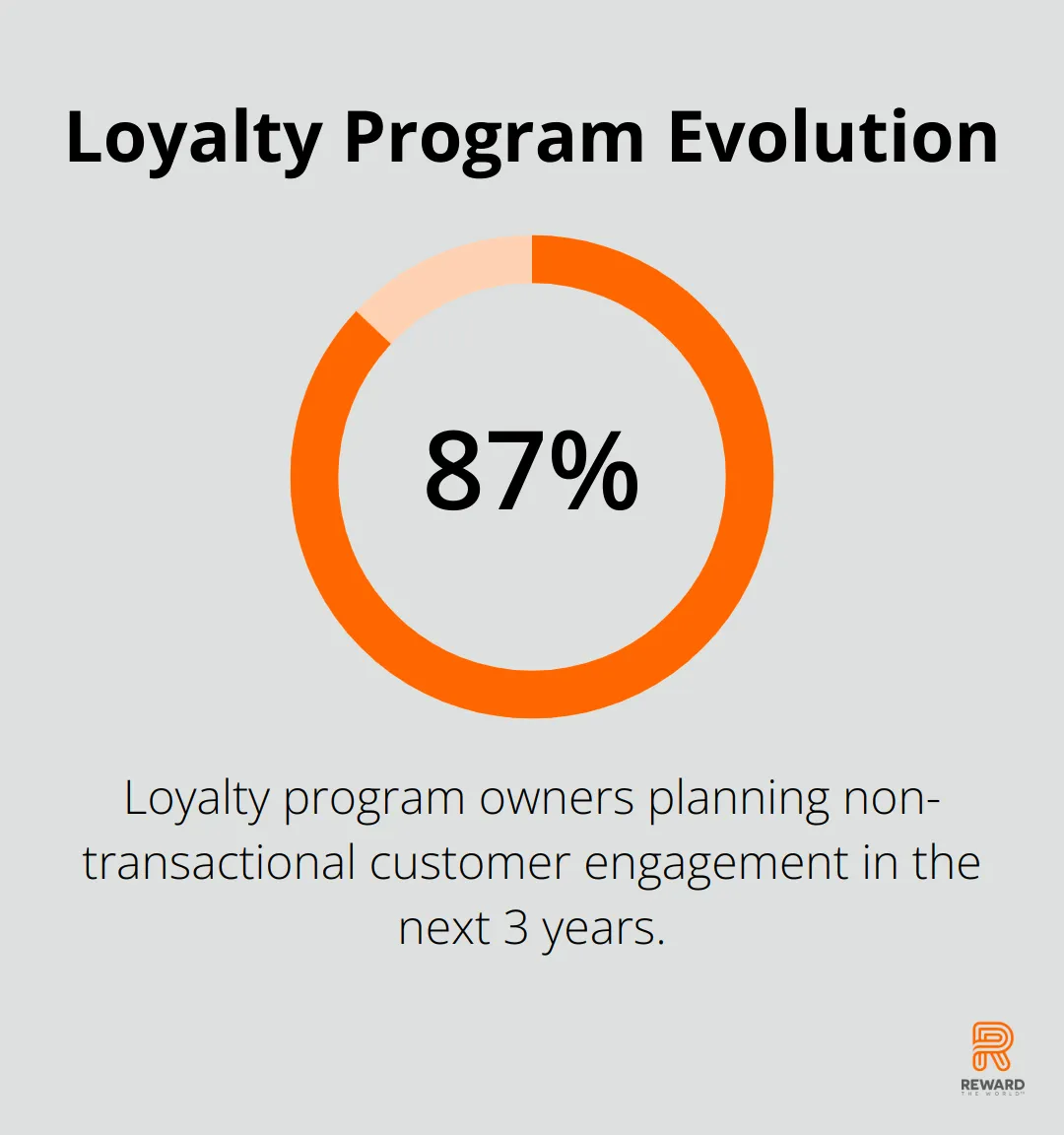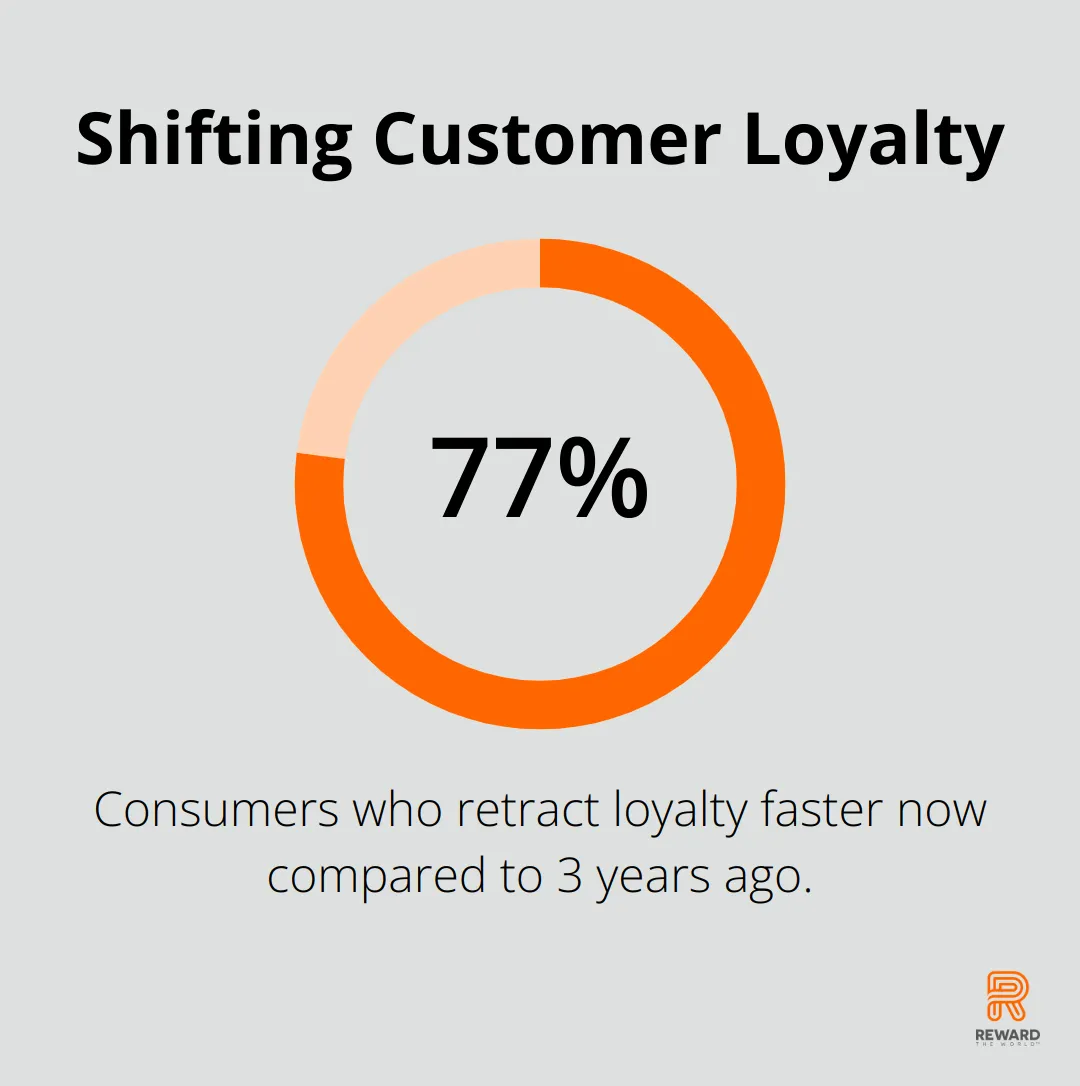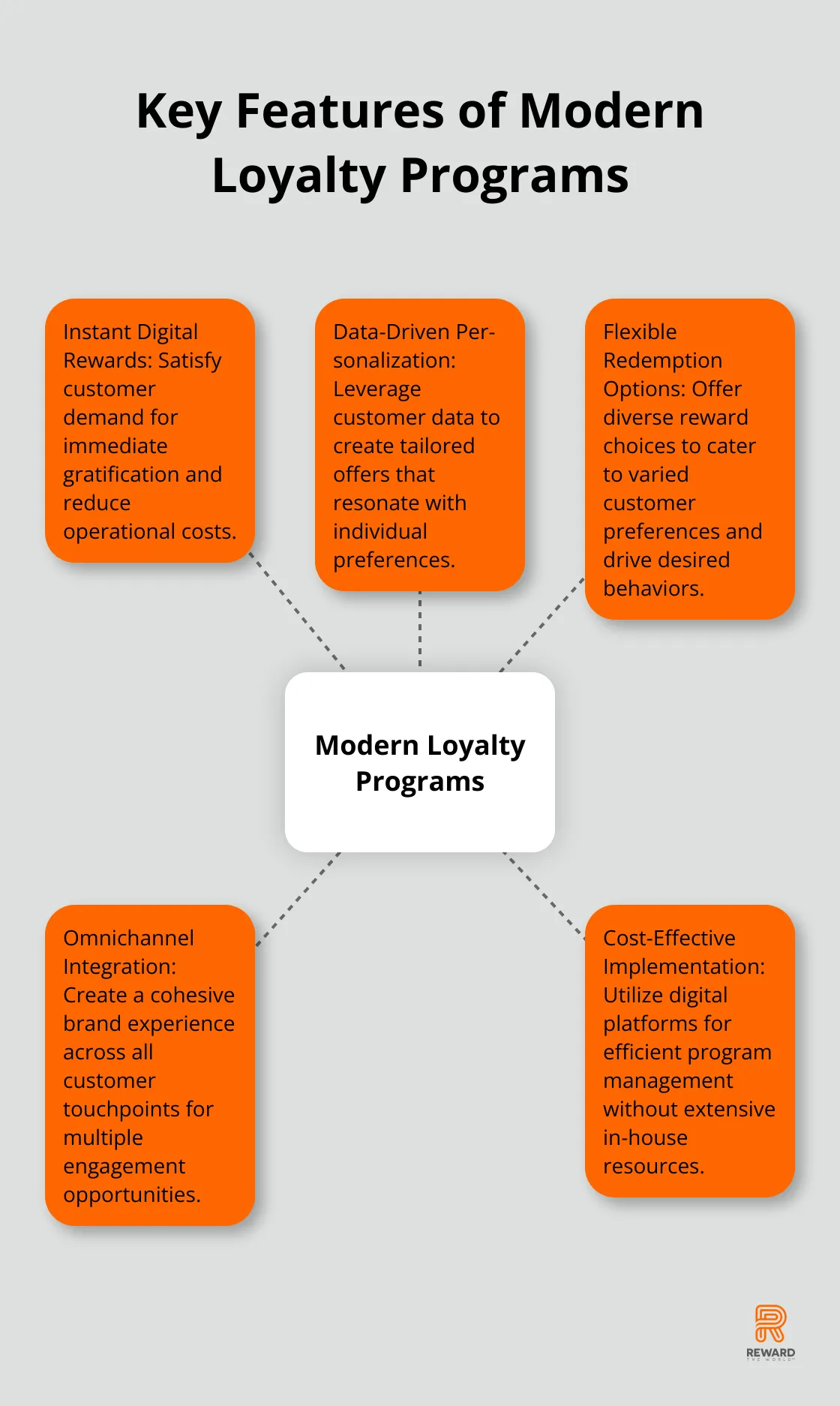
Traditional loyalty programs are falling short, leaving businesses with untapped potential and lost revenue. At Reward the World, we’ve seen how outdated approaches fail to engage customers and drive meaningful results.
Behavioral economics reveals that modern consumers crave instant gratification and personalized experiences. It’s time for companies to embrace innovative loyalty solutions that capitalize on these insights and maximize their return on investment.
Why Traditional Loyalty Programs Fall Short
Engagement Rates Hit Rock Bottom
Traditional loyalty programs struggle to maintain customer interest. 87.5% of loyalty program owners plan to engage with customers in non-transactional ways in the next three years. This shift indicates a recognition of the need for more meaningful interactions beyond simple point accumulation. Companies are realizing the importance of creating deeper connections with their customers to drive loyalty.

Personalization: The Missing Link
The one-size-fits-all approach of traditional loyalty programs no longer works. In an era where consumers expect tailored experiences, generic point systems and standardized rewards miss the mark. A recent study reveals that consumers’ feelings about a brand, more than need, drive stronger engagement with marketing. This underscores the importance of creating emotional connections and personalized experiences to foster loyalty.
Limited Rewards Lead to Customer Frustration
Inflexibility in reward options is a major drawback. Many programs offer a narrow range of rewards that don’t appeal to all customers. This leads to frustration and disengagement. A Bond Brand Loyalty study showed that 79% of consumers consider reward relevance the most important aspect of a loyalty program. When rewards don’t align with customer preferences, the program’s effectiveness drops significantly.
High Operational Costs Eat Into Profits
Traditional loyalty programs often come with hefty operational costs. From managing physical cards to maintaining complex point systems, these expenses can significantly reduce profit margins. A Forrester Research report indicates that companies spend an average of 2% of total revenue on loyalty program maintenance. This substantial investment often fails to deliver proportional returns, especially when engagement rates are low.
These limitations cause traditional loyalty programs to leave money on the table. As we move forward, it’s crucial to understand the hidden costs of these ineffective programs and their impact on a company’s bottom line.
The True Cost of Outdated Loyalty Programs
Silent Customer Exodus
Ineffective loyalty programs don’t just fail to deliver results; they actively harm businesses. Customer churn due to dissatisfaction with loyalty programs is a silent killer for companies. A study reveals that 77% of consumers now retract loyalty faster than 3 years ago. This rapid shift in loyalty behavior means that outdated programs don’t just fail to retain customers – they actively push them away.

Missed Revenue Opportunities
Outdated loyalty programs often fail to capitalize on upselling and cross-selling opportunities. A report highlights that increasing customer retention rates by just 5% can increase profits by 25% to 95%. However, many traditional programs lack the sophisticated data analysis needed to identify and act on these opportunities effectively.
Marketing Dollars Down the Drain
Inactive members are a significant drain on resources. This implies that a large portion of marketing spend dedicated to these programs is essentially wasted on members who aren’t engaged or active.
Tarnishing Brand Image
The most insidious cost of ineffective loyalty programs is the damage to brand perception. When loyalty programs fail to meet expectations, it doesn’t just impact that specific initiative – it can tarnish the entire brand image.
The Need for Modern Solutions
These hidden costs underscore the urgent need for businesses to reassess their loyalty strategies. Companies must explore modern solutions that address these issues head-on and deliver real value to both businesses and customers alike. In the next section, we’ll explore how innovative approaches can transform loyalty programs from cost centers into powerful drivers of growth and customer satisfaction.
How Modern Loyalty Programs Drive Real Results
The Power of Instant Digital Rewards
Today’s consumers demand immediate gratification. Digital rewards delivered instantly via email or mobile app satisfy this need while reducing operational costs. This shift meets customer expectations and allows businesses to track redemption rates and adjust offerings in real-time.
Data-Driven Personalization Transforms Engagement
Personalization is essential for modern loyalty programs. Businesses can create tailored offers that resonate with individual preferences by leveraging customer data. Epsilon research sheds light on consumer habits, behaviors, and attitudes toward loyalty programs. Advanced loyalty platforms allow businesses to segment customers based on behavior, purchase history, and demographics, enabling hyper-targeted campaigns that yield higher engagement and conversion rates.
Flexibility Enhances Customer Satisfaction
One-size-fits-all rewards no longer suffice. Modern loyalty programs offer a diverse range of redemption options to cater to varied customer preferences. Recent research shows that increased loyalty from these programs translates into higher long-term profitability as loyal customers continue to choose the brand over competitors. Providing flexible reward choices (from gift cards to experiences) ensures a program appeals to a broader audience and drives desired behaviors.
Seamless Integration Across Marketing Channels
Effective loyalty programs don’t exist in isolation. They integrate across all customer touchpoints-from in-store experiences to social media interactions. This omnichannel approach creates a cohesive brand experience and provides multiple opportunities for engagement.
Cost-Effective Implementation Through Digital Platforms
Digital platforms (such as Reward the World) offer cost-effective implementation of modern loyalty solutions. These platforms provide businesses with the tools to create, manage, and analyze loyalty programs without the need for extensive in-house resources. This approach allows companies of all sizes to compete effectively in the loyalty space, leveling the playing field and driving innovation across industries.

Final Thoughts
Traditional loyalty programs fail to meet modern consumer expectations, resulting in lost revenue and untapped potential. Behavioral economics highlights the importance of instant gratification and personalized experiences in driving customer engagement. Modern loyalty solutions address these needs through instant digital rewards, data-driven personalization, and flexible redemption options.
Companies must reassess their loyalty strategies to stay competitive in today’s market. Innovative approaches not only meet consumer demands but also offer financial advantages through increased customer retention and more effective marketing spend. Cost-effective digital platforms allow businesses of all sizes to implement modern loyalty programs.
Reward the World offers a dynamic global incentives platform that addresses these modern needs. Our solution helps businesses foster customer loyalty, increase sales conversions, and enhance employee recognition (with instant reward delivery and robust analytics). Companies that adopt such innovative platforms can maximize their loyalty investments and achieve sustainable growth in an evolving market.
